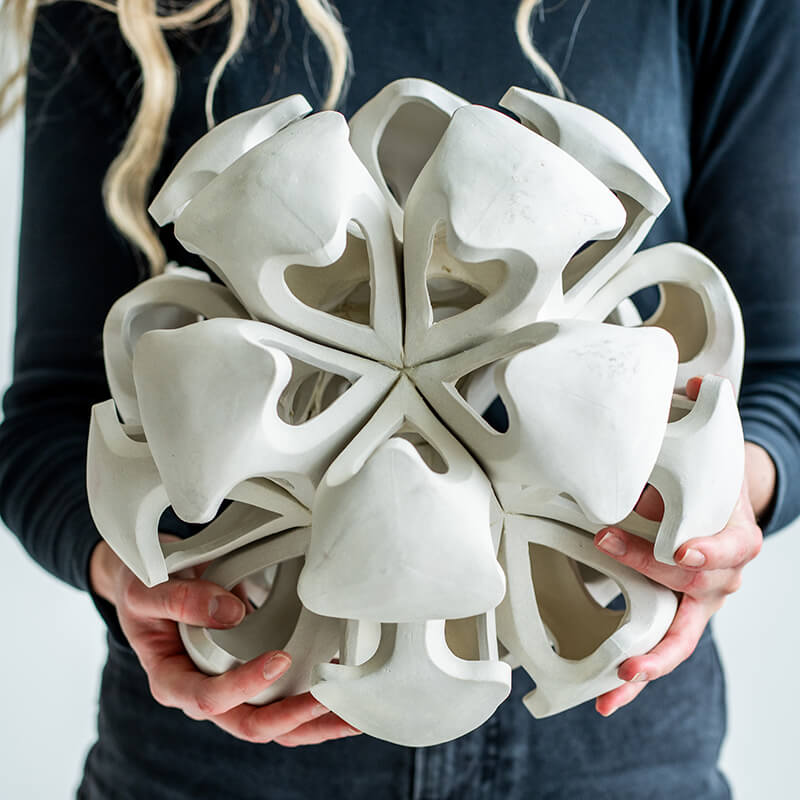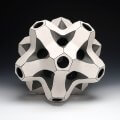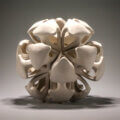
Red Lodge Clay Center – Short-Term Resident (ASPN) 2024
Maia McNeil is a ceramic artist currently residing in Logan, Utah where she is receiving a Bachelor of Fine Arts in ceramics at Utah State University. Her work has been shown in Logan Utah, Aurora Colorado and in Denver Colorado. She focuses on sculptural forms and is influenced by her love of engineering and parametric design. The stability these subjects offer became a great source of comfort to her as she grew up in constantly changing environments. Within her ceramic practice, she skillfully merges her passion for mathematics with clay as she discovers new pathways for aesthetic experiences. She hopes to alter how people perceive ceramics through popularizing the connections that exists between art and other academic fields of study.
I am motivated to create work as I find elegance, beauty, and balance within realizing mathematical shapes and relationships in clay form. The liminal space between complexity and simplicity within my work allows for reflection and discovery within the parameters of parametric design and perspectives systems. I gain satisfaction from discovering new pathways to new aesthetic experiences. My work is influenced by artists such as Richard Sweeney, David Umemoto, and Eliza Au. Like them, I seek to learn how to push the materials I use beyond previously conceived limitations while alluding to something beyond what people first perceive. I create modular ceramic sculptures that behave as patterns which mirror and replicate each other, seemingly, in a dance of artificial growth. Platonic solids such as tetrahedrons, cubes, dodecahedrons, and icosahedrons are common shapes seen within my work.
Each of my sculptures are made with a combination of slip casting and slab building. My finished surfaces are achieved by adding colorants into the slips I use or leaving clay bodies bare. By using molds, I am able to achieve a level of consistency not easily reached with other methods. Through the repetition and interlocking of manipulated geometric planes, I am able to build structures that reference fluidity while simultaneously retaining sentiments of rigidity. While somewhat large in scale, the regularity of perforated planes and shapes within my work produces a sense of lightness. The individual components of my sculptures work together to pull away from a visual dependency of mass. The negative space within each piece is equally important to that of the material itself. My goal is to inspire introspection and lead people to the question: How do you define balance between the tangible and intangible?








